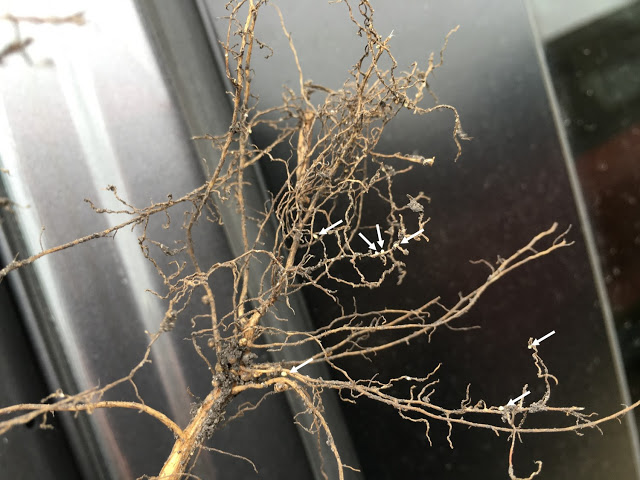November 6, 2018

As we wait another week for the fields to dry out, this provides some time to sample soil for the SCN populations. The SCN Coalition theme for the next few years is "What’s your number?" Do you know where SCN is in your fields and what the current population is? If it's high, then there is a second number – what is the SCN type? This addresses the bigger question, can it reproduce on the SCN resistance source PI 88788 or Peking? All of these numbers can impact management of this root pathogen and future losses.
The situation in Ohio: We know that the state is now “polluted” with SCN. Fortunately, most of those fields are at very low levels – which is where they should be kept.
So far, we have received samples from an initial survey of 33 counties in Ohio as part of the SCN Coalition sampling. Our first round is from members of the American Soybean Association sponsored by Ohio Soybean Council.
SCN Population Level | Total fields | % processed |
None Detected | 67 | 37.4 |
Trace (40-200) | 51 | 28.5 |
Low (200-2000) | 43 | 24.0 |
Moderate (2000-5000) | 14 | 7 |
High (5000 +) | 4 | 2 |
Total | 179 |
|
However, there are some surprising locations where individual fields are getting or have gotten into trouble with very high populations (>5,000). So let’s review the loss levels for SCN for the majority of soil types here.
Levels of SCN and concerns:
SCN egg Count/100 cc | Cyst count | Population Level |
0-40 | 0 | not detected |
40-200 | 1 | trace |
200-2000 | 1-4 | low |
2000-5000 | 3-20 | moderate |
5000 & over | 15-20 | high |
If your SCN report in the past has come back as:
Not detected: This is not surprising. Remember that SCN sits in pockets and can be quite variable (Figure 1). Continue to monitor your fields.
Trace: May begin to measure some yield loss on susceptible varieties, especially on lighter soils.
Low: Plant SCN resistant varieties or rotate to a non-host crop (corn or wheat).
Moderate: Rotate to a non-host crop and follow with SCN resistant varieties the following year. We have planted susceptible varieties in fields with this level of SCN and have recorded 20 to 50% yield loss.
High: Rotate to a non-host crop for two to three years, then sample SCN to determine if populations have declined to a level where soybeans can be planted again.
SCN is picky about what it feeds and reproduces on, but it does like a few weed hosts and cover crops in addition to soybeans. If you have SCN in your fields, it is important to also control winter annuals such as purple deadnettle, but also avoid cover crops such as several of the clovers, cowpea and common and hairy vetch.
We recommend sampling in the fall – because in most cases this is what the population will be in the spring. With warmer weather this year, and hopefully no frozen ground, that should give ample time to collect and process the samples in plenty of time for spring planting. Processing of samples does cost time and money, so here are a few thoughts on how to sample or how to target your sampling to get the best information for your money.
Updated information on where to send the samples for processing for a fee:
OSU C. Wayne Ellett Plant and Pest Diagnostic Clinic
8995 E. Main St. Bldg 23
Reynoldsburg, OH 43068
Phone: 614-292-5006
ppdc.osu.edu- follow this link to download forms to go along with the samples
Brookside Laboratory Inc.
200 White Mountain Dr.
New Bremen, OH 45869
417-977-2766,[email protected]
Spectrum Analytic Inc.
1087 Jamison Rd. NW
Washington Court House, OH 43160
740-335-1562
For some additional information on Management of SCN – always check Ohio’s SCN fact sheet and several other resources as well: https://u.osu.edu/ohscn/
http://soybeanresearchinfo.com/- link to the 5thedition of the SCN guide developed through the North Central Soybean Research Program.
Video on recent findings and sampling protocol for SCN:
Source: The Ohio State University
You May Also Like




